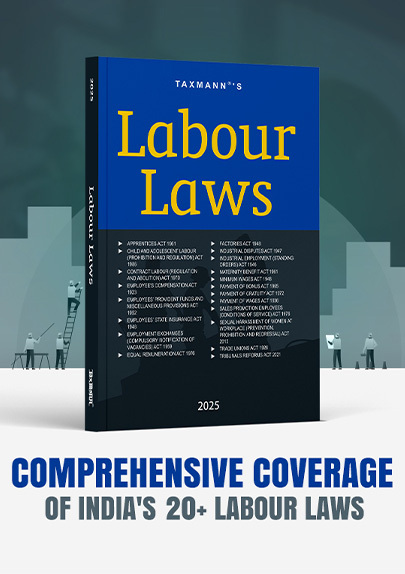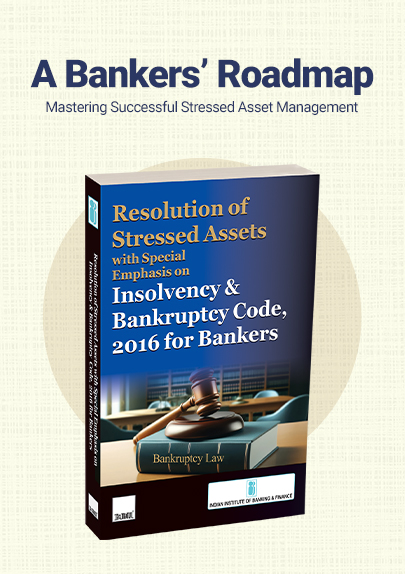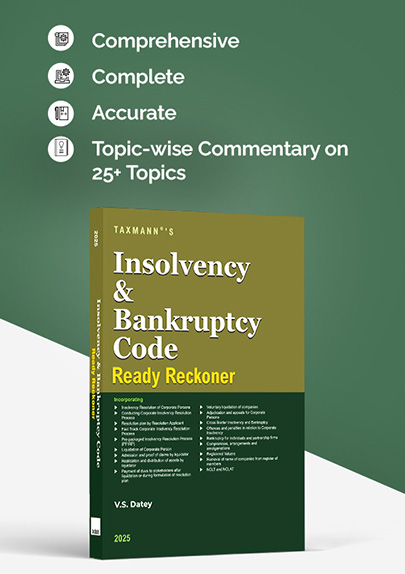[Analysis] Market Infrastructure Institutions – SEBI’s New Governance Framework
- Blog|Advisory|Company Law|
- 5 Min Read
- By Taxmann
- |
- Last Updated on 28 November, 2024
SEBI's governance reforms for Market Infrastructure Institutions (MIIs) aim to enhance transparency, accountability, and regulatory oversight. Key proposals include a structured process for the appointment, re-appointment, and termination of Key Managerial Personnel (KMPs) involving independent external agencies, the Nomination and Remuneration Committee (NRC), and SEBI. The reforms also introduce a policy for a minimum cooling-off period for KMPs and directors before joining competing MIIs, empowering the Governing Boards to tailor policies to their operational needs. These measures prioritise public interest, reduce conflicts of interest, and strengthen the governance framework for Stock Exchanges, Clearing Corporations, and Depositories.
Table of Contents
- Introduction
- Compensation Disparity and Governance Structure in MIIs
- Process for Appointment/Re-appointment and Termination of KMPs at Market Infrastructure Institutions
- Proposed Cooling-Off Period Policy for KMPs and Directors at MIIs
- Conclusion
1. Introduction
On November 22, 2024, SEBI unveiled a consultation paper proposing significant reforms to enhance the Market Infrastructure Institutions (MIIs) governance framework. These reforms focus on the appointment process of Key Managerial Personnel (KMPs), establishing a cooling-off period for KMPs and directors before joining a competing MII, and building greater transparency and accountability in the functioning of MIIs.
The proposed changes seek to strengthen the regulatory framework governing Stock Exchanges, Clearing Corporations, and Depositories, ensuring that these vital institutions operate with integrity, efficiency, and a commitment to public interest. Comments on the proposal are invited by December 12, 2024, allowing stakeholders to contribute to shaping these important governance reforms.
2. Compensation Disparity and Governance Structure in MIIs
Market Infrastructure Institutions (MIIs) provide essential capital market infrastructure for trading, clearing, settlement, and record-keeping of securities. They are uniquely empowered by law to regulate their members, including listed companies, Trading Members, Clearing Members, and Depository Participants. MIIs must balance their role as public utilities and first-line regulators, operating efficiently and competitively as profit-driven entities.
While the Governing Board of the MII sets the tone at the top, the culture of prioritising public interest (Verticals 1 and 2) over commercial interest (Vertical 3) must run deep at the operating level.
The SEBI observed that in some large MIIs, there is a significant disparity between the compensation of the MD and the KMPs heading Verticals 1 and 2 of the MII. These KMPs also report to the MD. The key reforms are as follows:
3. Process for Appointment/Re-appointment and Termination of KMPs at Market Infrastructure Institutions
SEBI has proposed reforms for the appointment of KMPs at Market Infrastructure Institutions (MIIs), viz., Compliance Officer (CO), Chief Risk Officer (CRO), Chief Technology Officer (CTO) and Chief Information Security Officer (CISO) or by whatever designations referred.
3.1 Appointment of KMPs at Market Infrastructure Institutions (MIIs)
As per the proposed framework, MIIs must engage an independent external agency to identify and recommend suitable candidates for appointment as KMPs in areas like compliance, risk management, technology and information security. The Agency must submit its recommendations to the Nomination and Remuneration Committee (NRC) of the MII.
Further, the NRC will evaluate the recommendations of the agency, and submit its own recommendations to the Governing Board of the MII and SEBI simultaneously. SEBI will review the NRC’s recommendations and will provide comments, if any, for the consideration of the governing board of the MII in a time-bound manner.
If no comments are received from SEBI in the prescribed period, then the Governing Board of the MII must assume that SEBI has no comments to offer. The Governing Board must decide on the appointment after considering NRC’s recommendations and SEBI’s comments, if any.
3.2 Re-appointment and Termination of KMPs at Market Infrastructure Institutions (MIIs)
As per the proposed framework, the NRC must evaluate re-appointment/termination cases and submit its recommendations to the Governing Board of the MII and SEBI simultaneously.
SEBI will review the NRC’s recommendations and will provide its comments, if any, to the Governing Board of the MII in a time-bound manner. If no comments are received from SEBI in the prescribed period, then the Governing Board of MII must assume that SEBI has no comments to offer.
The Governing Board must make the final decision for re-appointment/termination after considering NRC’s recommendations and SEBI’s comments, if any.
| Comments |
| The proposed norms aim to establish a transparent, structured and collaborative process for the appointment, re-appointment and termination of KMPs at MIIs. By involving independent external agencies, such as the NRC and SEBI, the framework seeks to enhance governance, accountability, and regulatory oversight, ensuring that competent and credible professionals are appointed to critical roles. |
4. Proposed Cooling-Off Period Policy for KMPs and Directors at MIIs
The consultation paper aims to empower the Governing Board of an MII to set the policy around a minimum cooling-off period for its KMPs and directors on the Governing Board before they can join a competing MII.
Whereas no cooling-off period is prescribed for MDs and KMPs under extant regulations, there is a provision for a cooling-off period for Public Interest Directors (PIDs) as prescribed under Regulation 24(3) of Securities Contracts (Regulation) (Stock Exchanges and Clearing Corporations) Regulations, 2018.
While regulations do not prescribe any cooling-off period for the MD and other KMPs, MIIs individually include a cooling-off period in their employment contracts. The Expert Working Group (EWG) recommended the introduction of a regulatory cooling-off period and suggested that this must continue to be left to the Governing Board of the respective MII to determine.
In view of the above, SEBI proposed that MII must adopt and implement a policy approved by its governing board prescribing a minimum cooling-off period for KMPs (including the MD) and their directors (including PIDs) before joining a competing MII. SEBI must no longer prescribe a cooling-off period for PIDs of an MII joining another MII.
4.1 Meaning of the Term “Competing MII”
The term “Competing MII” refers to movement from one exchange to another exchange, one Clearing Corporation to another Clearing Corporation and one Depository to another Depository.
| Comments |
| The proposed norms aim to strengthen governance and minimise conflicts of interest by empowering the Governing Board of an MII to formulate and implement a policy prescribing a minimum cooling-off period for KMPs. By aligning the cooling-off period policy with the specific needs of MIIs and removing the SEBI-mandated cooling-off period for PIDs, the framework ensures flexibility while safeguarding the integrity of the ecosystem. |
5. Conclusion
In conclusion, SEBI’s proposed norms mark a significant step toward enhancing governance standards in Market Infrastructure Institutions (MIIs). By establishing clear and transparent processes for the appointment, re-appointment, and removal of key personnel, alongside a well-defined cooling-off period policy, these measures aim to ensure accountability and minimise conflicts of interest. Empowering the Governing Boards to design policies that align with their operational needs while safeguarding public interest strikes a thoughtful balance between flexibility and regulatory oversight. Comments may be submitted by December 12, 2024.
Disclaimer: The content/information published on the website is only for general information of the user and shall not be construed as legal advice. While the Taxmann has exercised reasonable efforts to ensure the veracity of information/content published, Taxmann shall be under no liability in any manner whatsoever for incorrect information, if any.







 CA | CS | CMA
CA | CS | CMA


